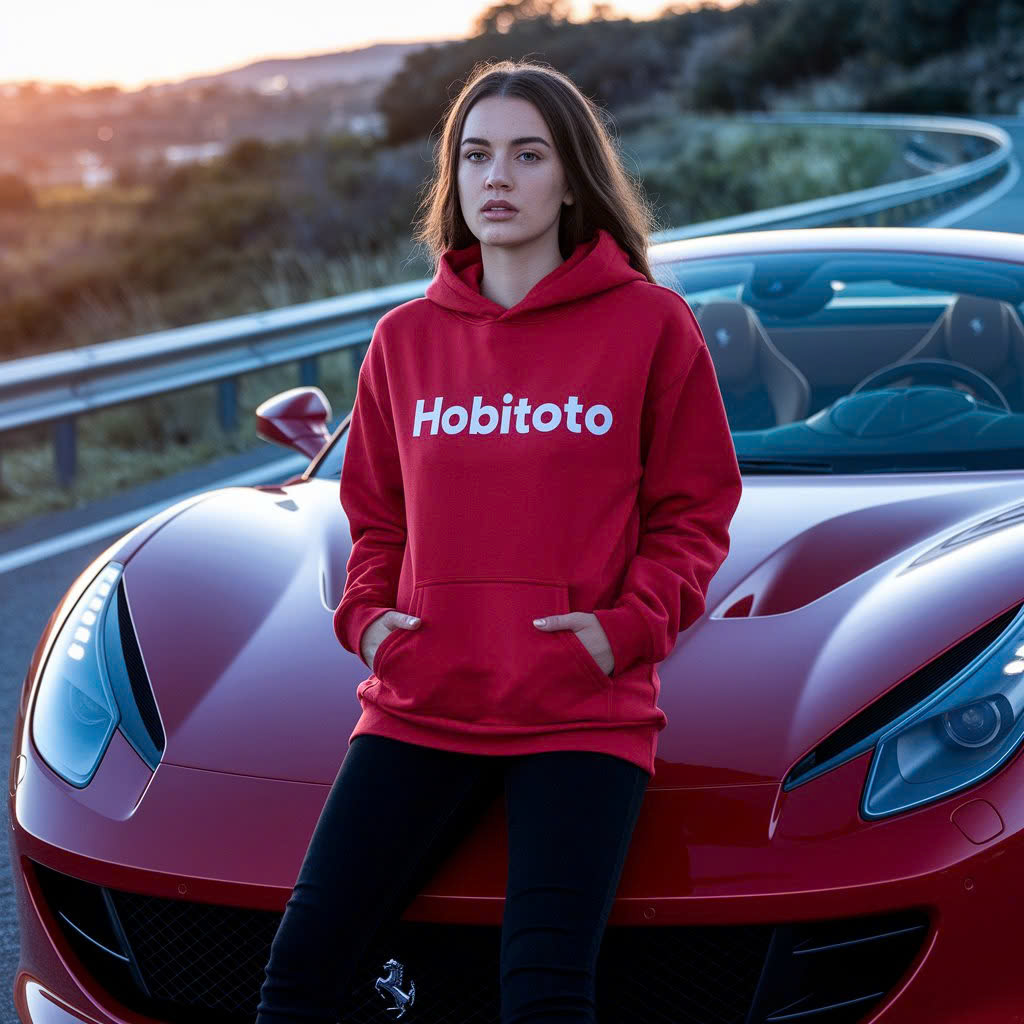The hoodie is a garment that has transformed dramatically over the past century. What began as a simple, practical piece of workwear designed to shield the wearer from cold and rain has evolved into a global icon of urban style, personal expression, and even technological promise. Its journey is a fascinating reflection of social change, creative experimentation, and economic dynamism. Today, the hoodie stands at the intersection of fashion and function, embodying the spirit of rebellion, comfort, and individuality.
The origins of the hoodie can be traced back to the early 20th century. In an era when industrial work demanded durability and practicality, hooded sweatshirts were created to serve a singular purpose: to protect laborers and athletes from harsh weather. These early versions were made from heavy cotton or wool blends and featured a basic design with a drawstring hood and a front pocket. They were designed not for style but for function—ensuring that workers and outdoor enthusiasts could perform their duties while staying warm in cold environments. During times of war, soldiers and pilots also embraced the utility of the hood, finding comfort in the additional layer of protection it provided against the elements.
As industrialization advanced and economies grew, so did the need for versatile everyday clothing. The hoodie gradually shed its strictly utilitarian image and began to appear in the daily wardrobes of people beyond just the working class. By the mid-20th century, as urban centers expanded and lifestyles became increasingly fast-paced, the hoodie’s simple design started to appeal to a broader audience. Its unadorned silhouette offered comfort and ease of movement, qualities that soon made it popular among students and young adults navigating the demands of modern urban life.
The cultural transformation of the hoodie truly accelerated during the 1960s and 1970s, a period characterized by social upheaval and the rise of countercultural movements. In bustling city streets and skate parks, young people began to adopt the hoodie as a symbol of nonconformity and individuality. Its unpretentious design provided a blank canvas for personal expression. Many modified their hoodies by adding patches, slogans, or graffiti-style artwork, turning the garment into a medium for silent protest and self-identity. For those who felt alienated by mainstream culture, the hoodie offered a means of communicating dissent without uttering a word—a wearable declaration of independence.
During these decades, the hoodie became closely associated with music genres such as hip-hop, punk, and alternative rock. Artists and performers began to embrace the hoodie as a key element of their personal style, reinforcing its image as a symbol of urban cool. Its versatility allowed it to adapt to various subcultures, whether as part of a rebellious outfit or as a statement of relaxed, understated confidence. The hoodie quickly transcended its humble origins, evolving into a cultural artifact that resonated with diverse groups of people across the globe.
Design innovation has been a constant throughout the hoodie’s evolution. The early, basic models—with their loose fit, simple drawstrings, and single front pocket—served their purpose well, but as the garment gained popularity, designers began to push the boundaries of its form and function. Today’s hoodies are available in an astonishing array of styles, cuts, and materials. Modern production techniques have introduced features such as zippered fronts, adjustable cuffs, contoured hoods, and even hidden compartments that enhance both the garment’s aesthetic and its practicality.
Advances in textile technology have played a significant role in redefining the hoodie. While traditional cotton remains popular due to its softness and breathability, contemporary hoodies often incorporate synthetic blends, fleece, or performance fabrics that offer moisture-wicking properties and thermal regulation. These innovations make the hoodie suitable for a range of activities—from casual wear on a cool evening to high-performance athletic wear. Digital printing and embroidery techniques have further transformed the hoodie into a customizable canvas, allowing designers and consumers alike to create intricate patterns, bold graphics, and personalized messages that make each hoodie unique.
The cultural impact of the hoodie extends far beyond its design. In many ways, the hoodie has become a symbol of the modern era—a garment that captures the essence of urban life, youthful rebellion, and creative freedom. It is not uncommon to see hoodies featured in music videos, films, and social media posts, where they serve as shorthand for a laid-back yet defiant attitude. For many, the simple act of pulling the hood up is a way to create a personal bubble of comfort and anonymity in an increasingly interconnected and sometimes overwhelming world. This duality—the ability to provide both physical warmth and emotional solace—has cemented the hoodie’s status as more than just clothing; it is a statement of identity.
In addition to its cultural symbolism, the hoodie wields significant economic power. As one of the most popular items in the global fashion market, hoodies are produced in staggering numbers each year. Fast fashion retailers churn out millions of hoodies to meet ever-changing trends, ensuring that the garment remains accessible to a wide range of consumers. At the same time, luxury brands and independent designers have elevated the hoodie into a high-end fashion item by releasing limited-edition collections and engaging in high-profile collaborations. These exclusive releases create a sense of scarcity and desirability that drives up demand and transforms the hoodie from a mass-market staple into a coveted collector’s item.
The global supply chain behind hoodie production is both extensive and complex. Manufacturing hubs in Asia, Eastern Europe, and Latin America have become integral to the production process, leveraging economies of scale and specialized expertise to produce hoodies at competitive prices. However, the sheer scale of production also raises important ethical and environmental concerns. Traditional manufacturing processes in the textile industry are known for their significant water usage, high energy consumption, and the release of chemical byproducts into the environment. As a result, consumers and advocacy groups have increasingly called for more sustainable and ethical practices in the production of hoodies and other garments.
In response to these challenges, many companies are now prioritizing sustainability and ethical production methods. Eco-friendly materials such as organic cotton and recycled polyester are becoming more common, as are innovative techniques like waterless dyeing and digital printing, which reduce waste and conserve resources. Furthermore, a growing number of brands are adopting transparent supply chains and engaging in third-party audits to ensure fair labor practices. This shift toward sustainability not only benefits the environment and improves working conditions but also aligns with the values of a new generation of consumers who demand accountability from the brands they support.
Technological innovation is also poised to shape the future of the hoodie in exciting ways. One promising avenue is the integration of wearable technology. Researchers and designers are exploring the development of “smart” hoodies that incorporate sensors to monitor health metrics such as heart rate, body temperature, and stress levels. These smart fabrics could transform the hoodie into a multifunctional device that not only keeps the wearer warm but also provides real-time feedback on their physical condition. Imagine a hoodie that adjusts its insulation based on the ambient temperature or alerts the wearer when they need to take a break during a workout—these advancements, though still in the early stages, hint at a future where clothing and technology merge seamlessly.
Digital customization is another frontier that is redefining the way consumers interact with hoodies. Online platforms now allow individuals to design their own hoodies by choosing from an array of colors, fabrics, and graphic elements. This on-demand approach to manufacturing reduces waste by producing garments only when there is a confirmed demand, while also empowering consumers to create personalized pieces that reflect their unique identities. The democratization of design has blurred the lines between mass production and bespoke craftsmanship, offering a level of personalization that was once unimaginable in the world of fashion.
Social media has played a pivotal role in amplifying the global influence of the hoodie. Platforms like Instagram, TikTok, and Pinterest are replete with images and videos showcasing diverse hoodie styles—from minimalist, monochrome designs to bold, graphic-rich statements. Influencers and everyday users alike share their hoodie looks, contributing to a vibrant digital culture that transcends geographical boundaries. This interconnected digital landscape has enabled trends to spread rapidly and has fostered a sense of community among hoodie enthusiasts around the world. Whether it is through viral challenges, online forums, or collaborative design projects, the hoodie continues to serve as a unifying symbol that brings people together.
Across different regions and cultures, the hoodie has been adapted and reinterpreted to reflect local tastes and traditions. In many parts of the world, regional designers have taken the classic hoodie and infused it with indigenous patterns, traditional fabrics, and culturally significant motifs. This fusion of global trends with local heritage not only enriches the aesthetic appeal of the hoodie but also reinforces its role as a bridge between diverse communities. Whether worn as a statement of modernity in cosmopolitan centers or as a functional garment in more traditional settings, the hoodie resonates with individuals from all walks of life, serving as a testament to the power of a simple design to connect people across cultural divides.
The impact of the hoodie is also evident in the realms of art, music, and social activism. Many renowned artists and musicians have embraced the hoodie as an integral part of their personal style, using it as a symbol of authenticity, resilience, and creative expression. Its presence in music videos, film, and street art has helped to cement its status as an icon of urban culture. Furthermore, the hoodie has often been used as a tool for social and political commentary. In protest movements and rallies, hoodies are worn as a sign of solidarity and defiance, offering a degree of anonymity while still conveying a powerful message of resistance. This dual functionality—as both a shield and a statement—underscores the hoodie’s ability to adapt to the needs and aspirations of its wearers.
Economically, the hoodie continues to be a vital component of the global apparel market. Its mass-market appeal is matched by its capacity to be transformed into a high-end fashion item through innovative design and limited-edition collaborations. This unique duality allows the hoodie to thrive in both fast fashion and luxury segments, catering to consumers with varying tastes and budgets. High-profile partnerships between established brands and influential cultural figures often result in exclusive hoodie collections that generate significant buzz and command premium prices. Such collaborations not only boost sales but also enhance the cultural cachet of the garment, making it a symbol of both accessibility and aspiration.
Looking to the future, the possibilities for further innovation in the hoodie are vast. As wearable technology matures and digital customization becomes even more integrated into the fashion industry, the next generation of hoodies is likely to be more interactive, personalized, and sustainable than ever before. Smart textiles that can respond to environmental stimuli, on-demand production models that reduce waste, and digital platforms that empower consumers to co-create their garments all point to an exciting future for the hoodie. These trends promise to redefine what a hoodie can be—transforming it from a simple piece of casual wear into a multifunctional, adaptive tool that meets the demands of modern life.
In conclusion, the hoodie stands as a remarkable example of how a simple design can evolve into a multifaceted cultural phenomenon. From its origins as a practical garment for workers and athletes to its current status as a global symbol of urban style and individual expression, the hoodie has continuously adapted to reflect the changing needs and values of society. It embodies comfort and functionality while also serving as a canvas for creative expression, social commentary, and technological innovation.
In today’s fast-paced and interconnected world, the hoodie offers more than just warmth—it provides a means for individuals to express their identity, challenge conventional norms, and connect with a global community. Its evolution mirrors our own collective journey through periods of rapid change, creative upheaval, and technological progress. As we look toward the future, the hoodie is poised to continue its legacy of innovation and reinvention, adapting to new challenges and opportunities while remaining a timeless emblem of modern culture.
Ultimately, the story of the hoodie is one of transformation, resilience, and boundless creativity. It reminds us that even the most unassuming garments can carry profound meaning and serve as powerful symbols of our shared human experience. As fashion, technology, and sustainability converge, the hoodie will undoubtedly remain at the forefront of cultural dialogue—a living testament to the enduring power of design and the limitless possibilities of self-expression.




Leave a Comment
Your email address will not be published. Required fields are marked *